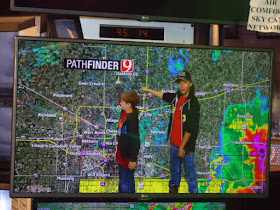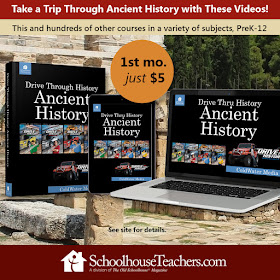For many students, history is just a bunch of facts and dates in a textbook. When we can make it come alive, that's when we get their attention and get them excited about learning! Primary sources are often letters and diaries, which personalize these 'facts' from history.
Another thing that students can learn from primary sources is 'bias.' In spite of how unbiased an account tries to be, there is always an element of reporter-bias. It's easy to show how this works in modern-day events, but through the use of primary sources, we can point out instances of it in the past as well.
Aside from being a first-hand and most-accurate account of historic events, primary sources can be fun! They bring to life the people, places, and events that are often glossed over in history textbooks. They add a deeper understanding, and often encourage students to do more research on their own!
 One of the many courses provided with your SchoolhouseTeachers family membership is 'Teaching with Primary Documents.' The course includes a set of 112 short lesson/lesson plans based on primary source documents. Each features historical background text, enlargeable images, discussion questions, worksheets, and book lists. If you're new to SchoolhouseTeachers, they provide all subjects for all grades, including advanced work and special needs help, for your entire family! You can find out more here.
One of the many courses provided with your SchoolhouseTeachers family membership is 'Teaching with Primary Documents.' The course includes a set of 112 short lesson/lesson plans based on primary source documents. Each features historical background text, enlargeable images, discussion questions, worksheets, and book lists. If you're new to SchoolhouseTeachers, they provide all subjects for all grades, including advanced work and special needs help, for your entire family! You can find out more here.
**Each of the We Were There novel studies has a primary source document, to be used for critical thinking questions. (These documents are located within the study; no digging required.)**
 One of the many courses provided with your SchoolhouseTeachers family membership is 'Teaching with Primary Documents.' The course includes a set of 112 short lesson/lesson plans based on primary source documents. Each features historical background text, enlargeable images, discussion questions, worksheets, and book lists. If you're new to SchoolhouseTeachers, they provide all subjects for all grades, including advanced work and special needs help, for your entire family! You can find out more here.
One of the many courses provided with your SchoolhouseTeachers family membership is 'Teaching with Primary Documents.' The course includes a set of 112 short lesson/lesson plans based on primary source documents. Each features historical background text, enlargeable images, discussion questions, worksheets, and book lists. If you're new to SchoolhouseTeachers, they provide all subjects for all grades, including advanced work and special needs help, for your entire family! You can find out more here.
Here are forty primary source documents to print and use in your school. Chronologically, they range from 1493 to 1946 and cover many aspects of American history. You can access them on our subscribers-only page. Not yet a subscriber? Sign up here!
Pick up a printable copy of this unit (and the printable primary documents) in the Humanities Unit Study Bundle!
- Each unit has introductory text, which will give the student basic background information about the topic at hand.
- There are photographs and illustrations, and we have also included primary documents when available.
- After this text, there are featured videos, which augment the background information and help make the topic more accessible for more visual students.
- You will also find a short list of reading books.
- There are vocabulary words, places, and people to identify.
- Reading comprehension, critical thinking questions, and writing assignments are included.
- We add fun with hands-on activities and extra videos to watch that will bring the era to life.
- Some units also have cooking projects.
These studies are directed toward upper grades students, but some have resources for younger students so that the whole family can work together. Our family has used unit studies as curriculum for many years, and we hope that your family will enjoy these, too!
















.jpg) Our Ancient Asia study included daily morning meditations and Japanese calligraphy at art time. Physical education was spent learning basic
Our Ancient Asia study included daily morning meditations and Japanese calligraphy at art time. Physical education was spent learning basic 
































